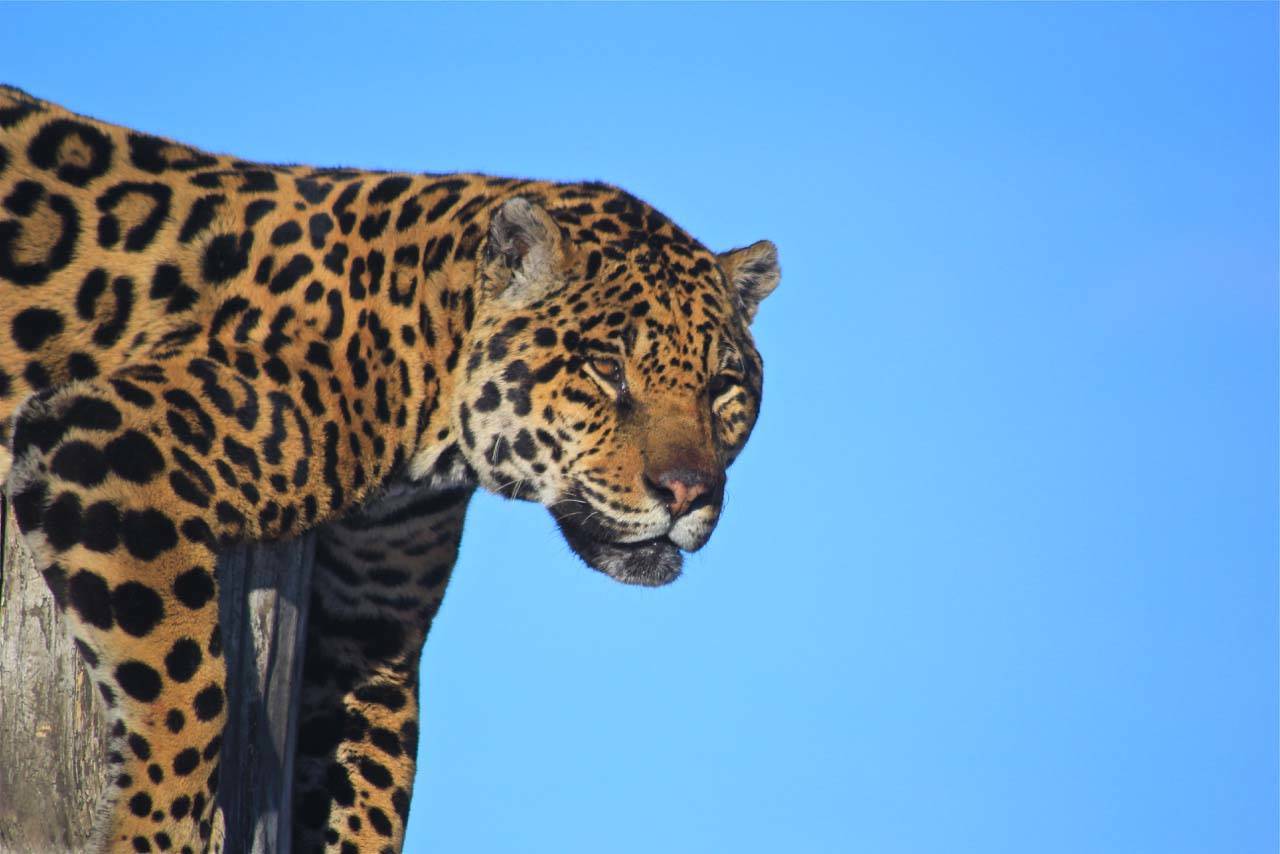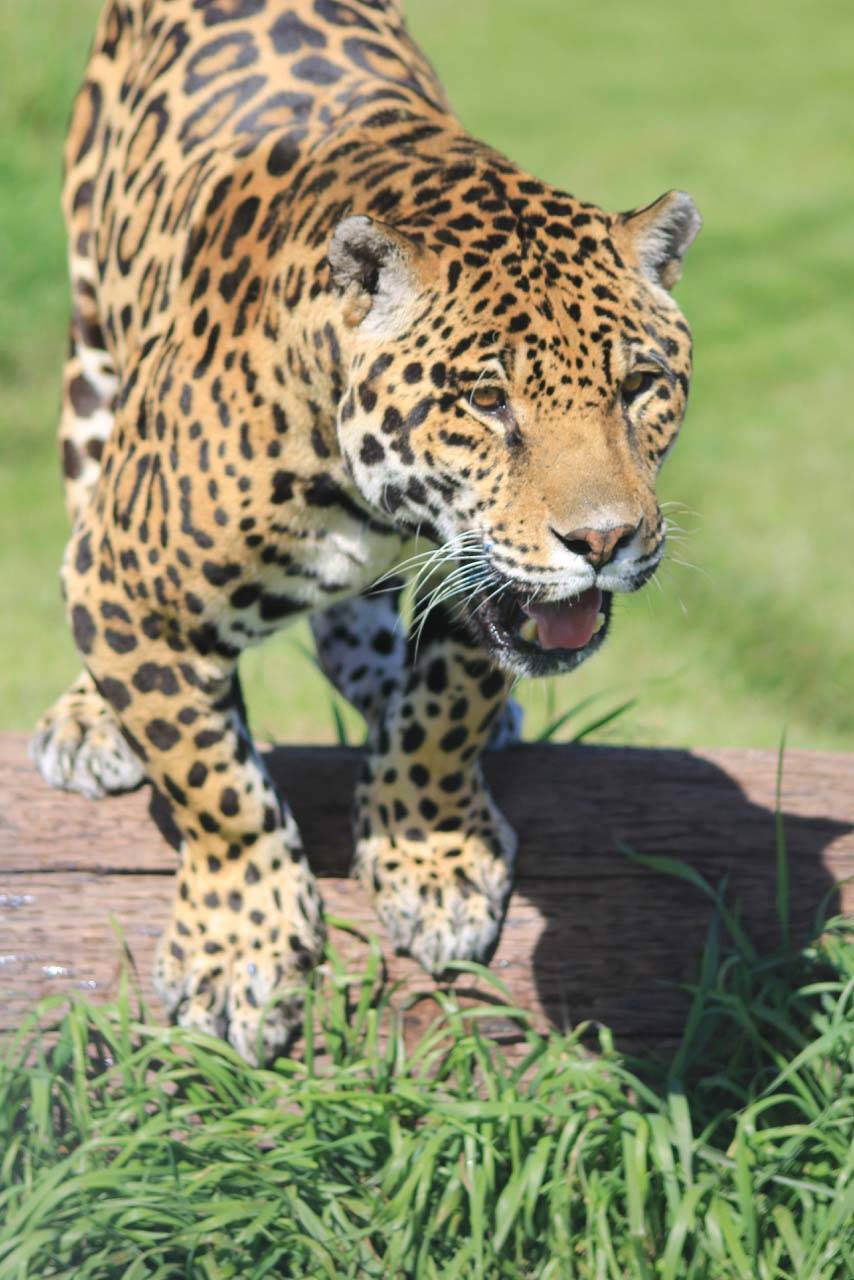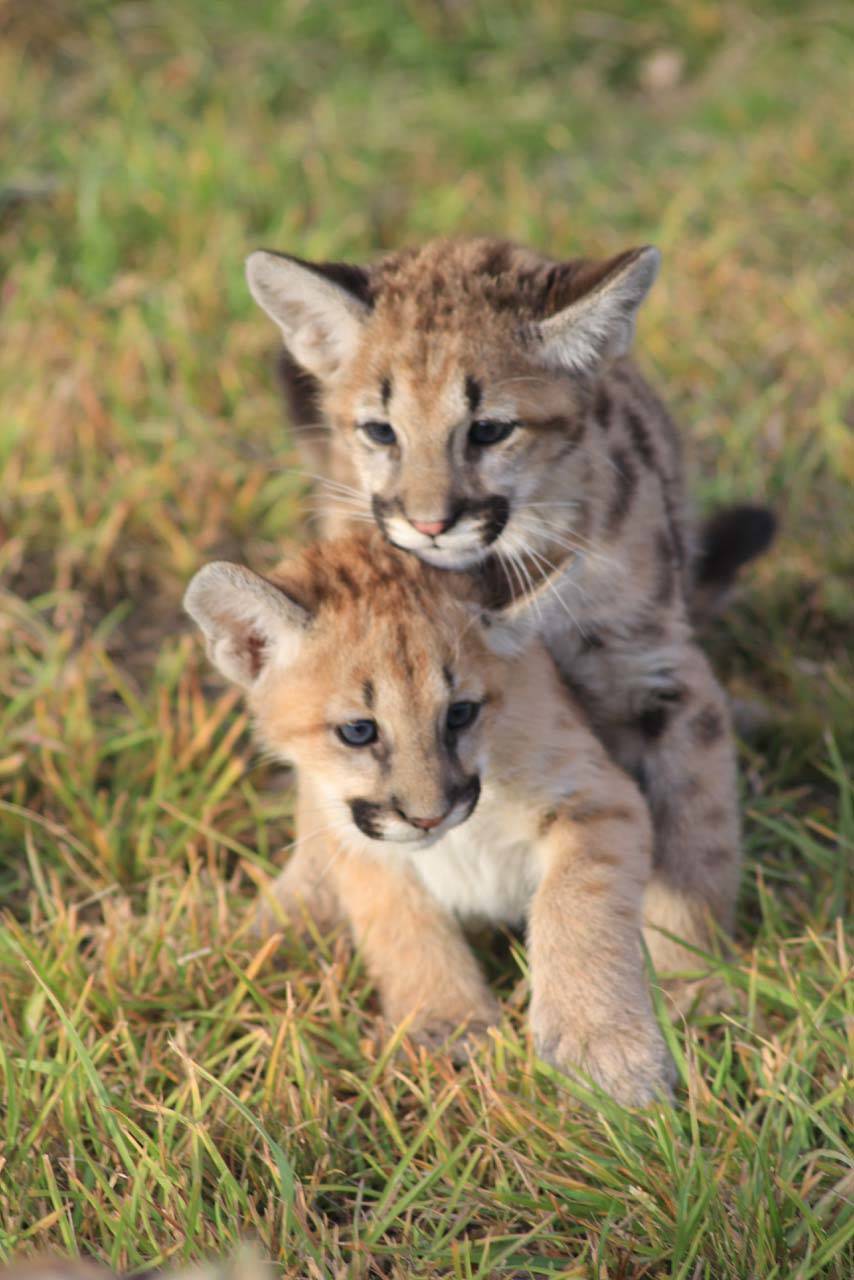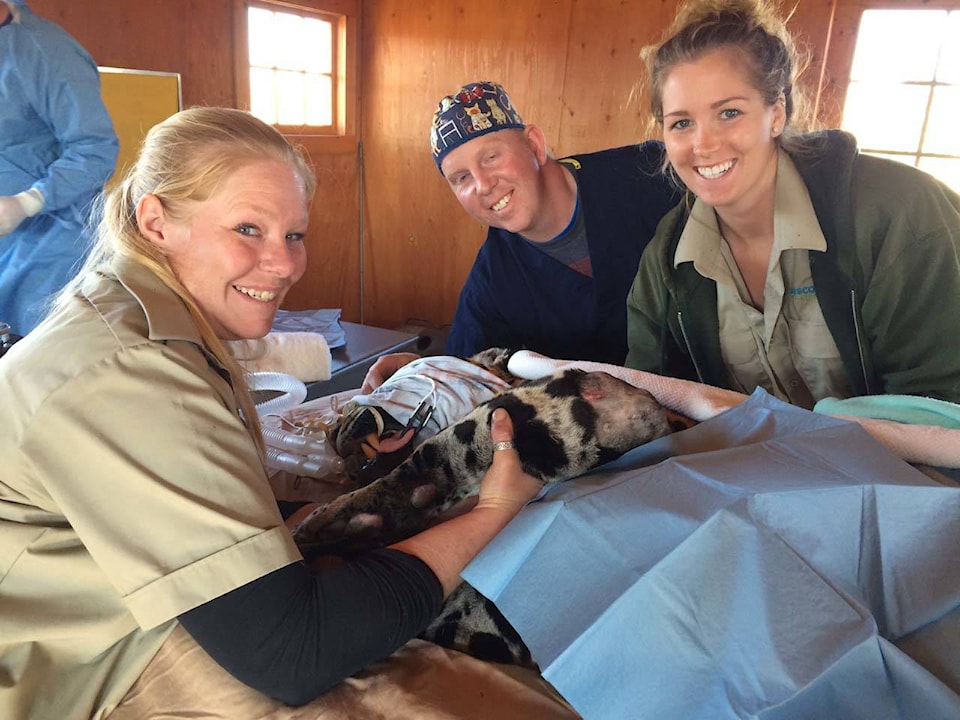Mr. Mia, a jaguar born at Innisfail’s Discovery Wildlife Park, loved the sound of giggles.
Mia, described as “highly intellectual” with a “high drive,” was born in December 2002 and died at the age of 16 earlier this month.
Serena Bos, head zoo keeper and animal trainer at Discovery Wildlife Park, said most large wild animals live around eight years in the wild. In captivity, jaguars live to be about 15, she said.
Mia loved to train. During public presentations, the audience’s applause or cheering motivates animals. For Mia, it was the public’s giggles. He was trained to pick up his toys and put them away in his toy box. But over time, he figured out that if he missed the toy box, people laughed.
“So he would actually purposely continuously miss if people continued to giggle. If people didn’t giggle, he would just put the toy away in the box,” said Bos, giggling herself.
Mia and Magnum, twin brothers, were born at the Innisfail park. Bos said their parents came from B.C., and had they not found a forever home, the parents would’ve been euthanized.
“They were older cats, hadn’t bred for over seven years, and at an age where nobody would expect for cats to breed, but they did.”
And so Mia, the tan-coloured jaguar, and Magnum, the black-coloured jaguar, were born. Bos said park officials believe the two were the only non-neutered pair in the world that lived together without being territorial.
“As far as we know, we’re the only place in the world that has successfully housed two fully intact male jaguars together. And we were able to feed them together, which was the result of the training and the amazing personalities as well.”
Today, Magnum misses his brother, feeling his absence, but he is “doing all right.”
Mia was the first jaguar in the world to receive stem cell treatment for arthritis. He received shots in two front elbows with a number of vets and a human doctor and nurse on site. After the treatment, Mia went through physiotherapy – something experts were able to implement because he was trained.
Mia was also trained to allow tooth brushing after a root canal and got his nails trimmed every two weeks.
The jaguar is an animal with threatened status, but Bos credits the training and care – including medical care – for Mia living a long, healthy life.
“Mia, wouldn’t have ever made it in the wild having arthritis. He broke a canine tooth. If you break a canine tooth in the wild, you’re not going to survive because not only the bacteria would kill you in your blood stream, but also your canine to do your job to hunt and survive as wild animals.”
For those who look forward to going to the Discovery Wildlife Park in May, they may not find Mia there, but they will find two cougar cubs – a new addition to the zoo.
Quora and Tavo arrived from Montana on Sept. 28. The two were part of a litter of four. The facility in Montana wanted to keep one cub.
“They were looking for a home for three, and they did find home for one of the others and two still needed a forever home, and we do provide forever homes for animals,” Bos said.
She said the high energy cubs are everywhere all the time.
To learn more about Discovery Wildlife Park’s winter activities, find them on Facebook.



